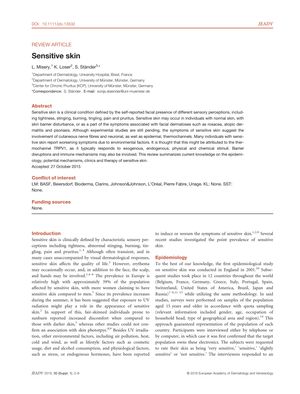Sensitive Skin
January 2016
in “
Journal of the European Academy of Dermatology and Venereology
”

🚨 The text primarily focuses on sensitive skin and its mechanisms, with minimal relevance to hair-related topics, except for a potential indirect link through skin health and inflammation.
TLDR Sensitive skin is often caused by nerve fibers and environmental factors, and can be managed with mild skincare and professional advice.
The 2016 review article discussed sensitive skin, a condition marked by sensations like tightness and burning without visible skin reactions, affecting approximately 39% of Europeans, more commonly in women. It explored the potential mechanisms behind sensitive skin, including the role of cutaneous nerve fibers and the TRPV1 thermochannel, which may be involved in the skin's response to stimuli. The review also considered the impact of environmental factors and lifestyle choices on the condition. It highlighted the importance of the epidermal barrier, the cutaneous nervous system, and TRPV1 in sensitive skin's pathophysiology. The document detailed how TRPV1 activation could lead to inflammation and itch, particularly in conditions like psoriasis, and discussed the challenges in diagnosing and treating sensitive skin, suggesting mild skincare products, avoidance of triggers, and potential treatments targeting TRPV1 and probiotics. Professional dermatological advice was recommended for cases where standard treatments fail.




